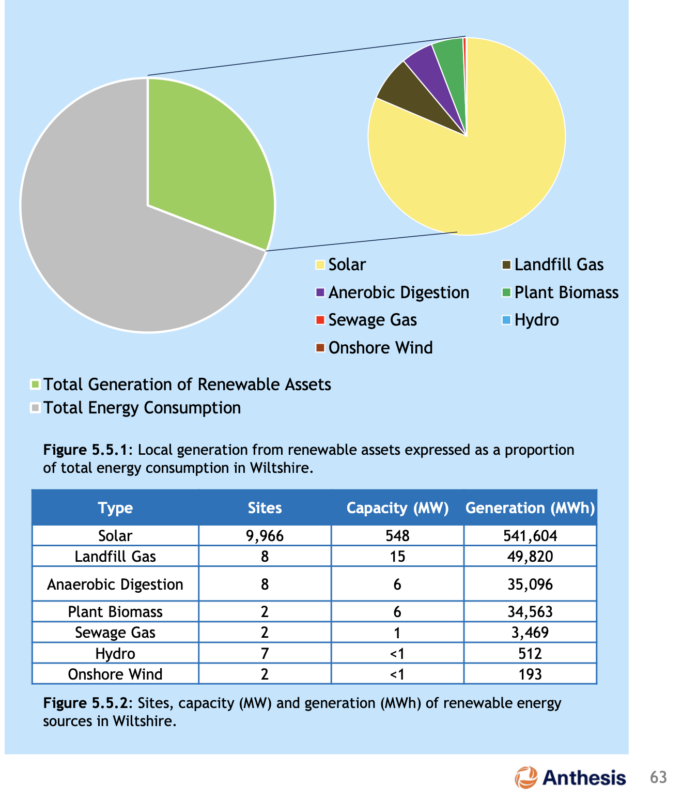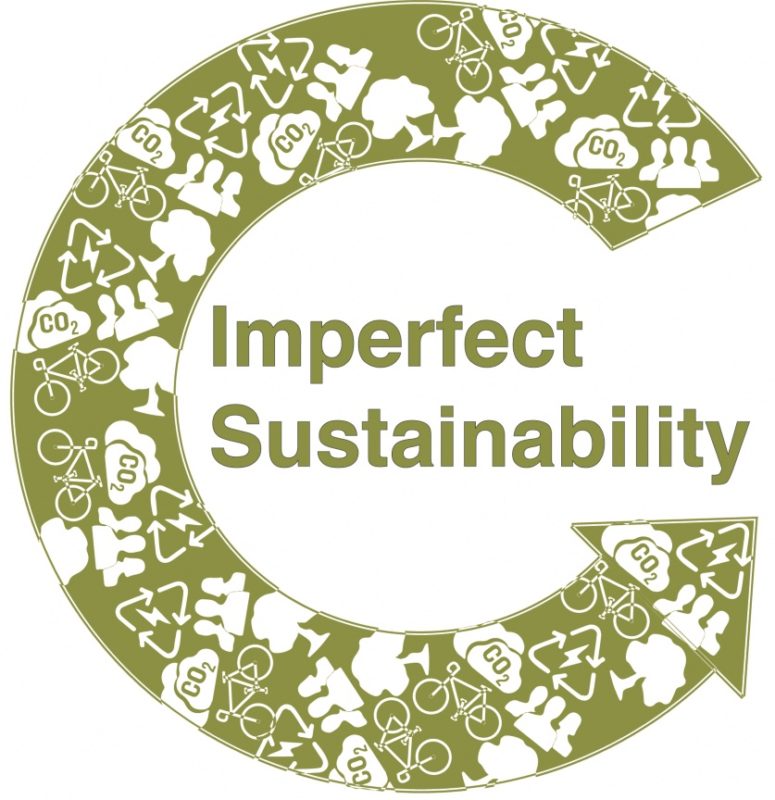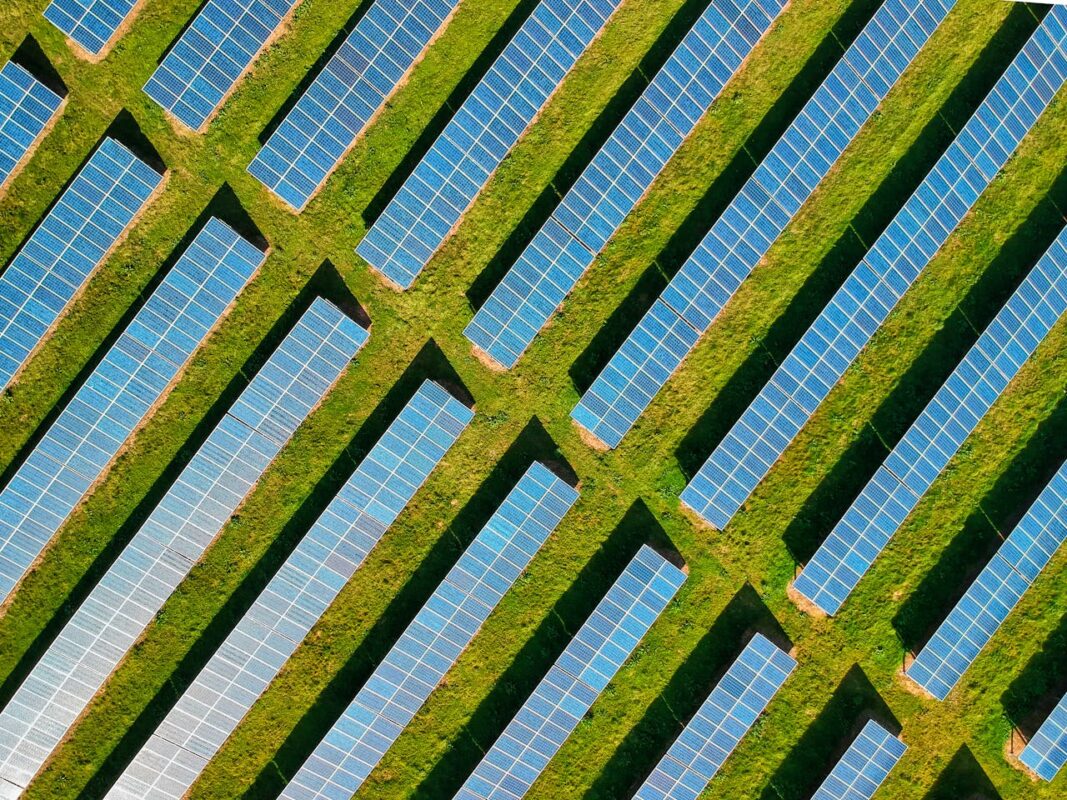Lime Down Solar park is a proposal for a 500MW solar park across a number of sites in North Wiltshire. The panels are situated in areas North of the M4 and the battery storage and grid connection close to Melksham. None of this is directly in Chippenham, so why do I feel the need to comment?
Well firstly this is an enormous expansion of renewable energy in North Wiltshire, and one that is absolutely needed. Secondly the site is receiving opposition from two local Conservative MPS and the Conservative local councillor. So i’d like to examine some of their reasons for opposition and state the case for.
Climate Change and Carbon Budget
The Global carbon budget from the beginning of 2024 to have 50% chance of staying within 1.5 degrees C is 275gt CO2e (1) This is equivalent to around 7 years assuming 2023 emission levels.
The only reason we have 7 years is the global south have a much smaller carbon footprint. If we assume the global population to be 8 billion people then we each have a carbon budget of approximately 32 tonnes of CO2e left to burn, ever.
If the average UK citizen uses around 10 tonnes of CO2e per year (2) , we have around 3 years left to get to net zero on a fair usage basis. So you can see the picture is pretty grim.
Though we won’t know until later in the year, the latest Copernicus data indicates we may well have already breached the 1.5 degrees C rise threshold.
So the case for a rapid reduction in emissions is clear and the reality is we don’t have until 2050 to get there. We certainly don’t have any carbon budget for opening new oil and gas fields.
(1) https://essd.copernicus.org/articles/15/5301/2023/
(2) https://www.carbonindependent.org/23.html
But Wiltshire has its quota of solar farms?
This claim seems to be used quite a lot in the argument against more solar in Wiltshire.
So how green is the grid in Wiltshire?
As a whole renewables in Wiltshire only meet 6% of our total energy demand.
If we look at the National Grid’s Carbon Intensity website for regional variation we can see how carbon intensive the grid is in North Wiltshire https://carbonintensity.org.uk
For the electricity part of total energy demand, currently Wiltshire only generates 38% of electricity demand from renewables, less than the national average of 43%.(Source Wiltshire Council Anthesis Report 2022). Much of our renewable energy is imported from offshore wind. On days when it’s not windy we’re in one of the most carbon intensive regions.
Though installed solar is doing well against the 2027 target, the overall renewable target has a large gap to close due to limited opportunities for onshore wind, hydropower, and biogas.
‘there still remains a significant gap to close in the overall amount of renewable energy generation needed by 2027’ – Anthesis Report – Wiltshire County
If we look at Carbon Intensity of the National Grid for my SN15 postcode you can see that at least 48% on average is generated from fossil fuels.
| Average Fuel % | 3.18 | 1.16 | 20.62 | 47.06 | 4.18 | 0.00 | 0.44 | 7.41 | 15.95 | |
| Biomass | Coal | Imports | Gas | Nuclear | Other | Hydro | Solar | Wind | ||
The Government’s British Energy Security Strategy calls for an ambitious increase in installed solar to 70GW by 2035, we are currently at just over 15GW.
So this ‘we’ve reached our quota argument’ simply doesn’t match the evidence.
We absolutely need more renewables in Wiltshire.

But we should put them on rooftops?
I agree with this. However as one of my other hats is the solar admin for the Zero Chippenham Community solar scheme I can say with absolute certainty it won’t happen fast enough to meet the scale of the problem. I have put solar on my own house roof and Industrial unit roof.
The very MPs proposing this as a solution opposed such measures in 2016 https://www.theguardian.com/environment/2015/jul/10/uk-scraps-zero-carbon-home-target
Since this date over 1 million homes have been built that could have had solar on their roofs.
At an average 2.5kWp per roof this could have resulted in 2.5GWp of installed solar on all those houses that need to be retrofitted. This is a very approximate calculation as not all roofs are suitable, but it was the wrong decision.
We also have the challenge of putting panels on roofs in the conservation area in Chippenham. Something i’ve supported but has been a challenge and is still getting opposition on conservation grounds.
The Government’s recent energy research paper concludes that in order to reach the 70GW target by 2035 that two thirds of the installations will need to be ground mounted. There simply isn’t enough rooftop space.
https://researchbriefings.files.parliament.uk/documents/CBP-7434/CBP-7434.pdf
From this UK government research briefing paper…
70GW of solar power by 2035
One of the government’s aims is to ramp up the deployment of rooftop and ground-mounted solar systems to achieve a fivefold increase in solar power by 2035 (from 14GW in 2022 to 70GW) . The government said it would seek:
-
The widespread deployment of rooftop solar on commercial and industrial properties.
-
the large-scale deployment of ground-mounted solar on brownfield, industrial, and low- and medium-grade agricultural land
Solar Energy UK also estimated that, to meet the government’s target of 70 GW of solar power by 2035, further 464 square kilometres would be required for new solar farms. For this analysis, it assumed that ground-mounted solar farms will account for around two thirds of the required increase (or 38 GW) and new solar farms would need three acres (around 1.2 hectares) per MW
So whilst rooftop installations account for one third, to meet the targets two thirds are assumed to be ground mounted solar.
Shouldn’t fields be kept for farming?
Well yes we should be farming on good agricultural land. Though with climate change this is becoming more of a challenge. For every degrees C temperature rise we hold approximately 7% more moisture in the atmosphere. The biggest threat to food security (as identified by the UK government) is Climate Change.
So surely Wiltshire Conservatives campaigning against this solar park are trying to preserve Farmland in general if this is the case?
Yet at the Wiltshire Cabinet meeting on the 12th December 2023 three farms to the South of Pewsham were made available for development by the very same Wiltshire Conservative cabinet member that is supporting the ‘Stop Lime Down’ campaign.
Surplus Approval/ The site has been identified in the Regulation 19 Local Plan for development. Declaring the land surplus will demonstrate that it is available for development thereby supporting the Local Plan allocation and is procedural to allow the review of the best outcomes for this site.’
See P130 in this report…
So we seem to have double standards here. It’s fine to concrete over farmland to the south of Pewsham forever, but much needed renewable energy placed on farmland without harming the soil is considered an outrage.
The National Farmers’ Union (NFU) has called for “a balance to ensure we can continue to produce quality, sustainable food […] while also delivering our net zero ambition”. It said that “ideally” solar farms should be located on lower-quality land, avoiding the use of BMV land.
https://researchbriefings.files.parliament.uk/documents/CBP-7434/CBP-7434.pdf
Solar Energy UK also estimated that, to meet the government’s target of 70 GW of solar power by 2035, further 464 square kilometres would be required for new solar farms. For this analysis, it assumed that ground-mounted solar farms will account for around two thirds of the required increase (or 38 GW) and new solar farms would need three acres (around 1.2 hectares) per MW
Do Solar Panels Harm Soil?
In reality, the soil (i.e. the sub-surface living eco-system) will be massively improved, will draw down and long-term sequester significant carbon and will be significantly better-yielding after spending years under Photo-Voltaic (PV) panels.
It will not have Fertiliser with the huge associated manufacturing Green House Gas emissions per tonne of fertiliser added to it. It will not have manure sprayed over it, all of which tends to occur on Class 3b land.
A well designed solar farm can become a home for wildlife during its lifetime with benefits for wildlife and biodiversity.
Conclusions
We absolutely have to rapidly build out renewables to reach our climate goals and stand a chance of avoiding climate and ecological collapse. We’re living in an era of cognitive dissonance where lack of knowledge and double standards by MPs and Wiltshire Cabinet members is extremely frustrating.
This is why I SUPPORT Lime Down Solar.
Footnote
If anyone doubts or questions my numbers or rationale i’m happy to discuss them.
Disclaimer
Please note though I am a Chippenham Town Councillor, this post does not represent any view of the ‘Town Council’ as a legal entity, these are my personal views. To the best of my knowledge Chippenham Town Council isn’t a consultee on these proposals, if they were then it would be the relevant council committee(s) that determines a response. In summary these are my personal view.


